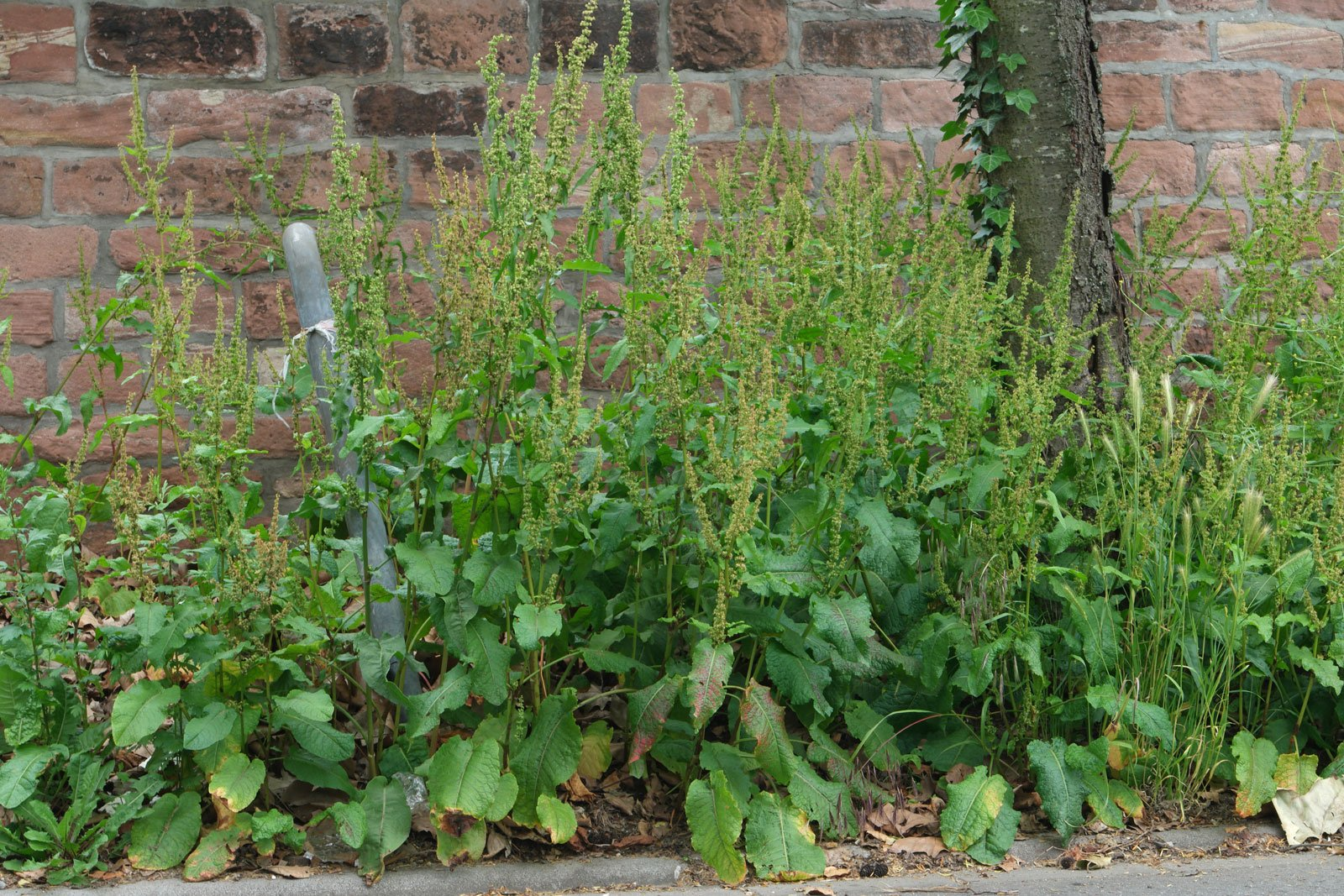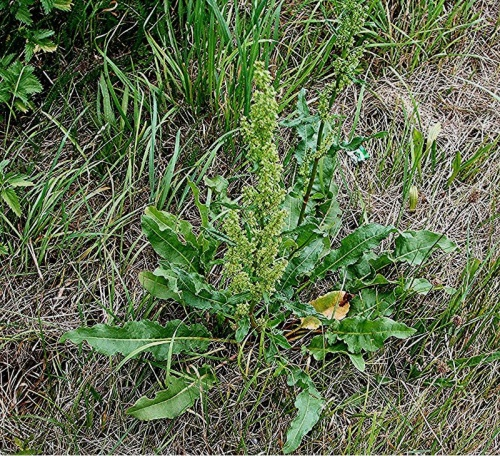June 18, 2020 at 1:18 pm | Updated April 20, 2022 at 1:54 pm | 7 min read
Stress is part of life for plants. They could face drought, pests, diseases, and sometimes salinity. If plants are impacted when they are young, they may never fully recover. These common problems, which can adversely affect plant productivity, can be both beneficial and detrimental to people, depending on the species of the plants. This is an exciting area of research scientists are exploring more deeply with the help of new portable field tools.
Annual and Perennial Herbs
The stress that plants face can be abiotic or biotic.
- Abiotic stress occurs due to unfavorable changes in the environment, such as drought, salinity, extreme temperatures, pollution, etc.
- Biotic causes can be pest and disease attacks, competition from other plants, etc.
Being sessile, plants cannot move to places with more benign conditions. So, they have developed mechanisms to cope with various types of stress. However, this ability is not uniform, and there are differences between species and within a single species. Stress at different life stages can also have varying influence on their growth and yield.
Subscribe to the CID Bio-Science Weekly article series.
By submitting this form, you are consenting to receive marketing emails from: . You can revoke your consent to receive emails at any time by using the SafeUnsubscribe® link, found at the bottom of every email. Emails are serviced by Constant Contact
It is also possible that the habit and lifespan of plants play a major role in stress response.
Among herbs, we have the annuals, which start from seed and complete their lifecycle within a year and have no persistent structures. Then, there are perennial herbs, where usually the roots have a persistent component, but the aerial branches and leaves undergo fast-recycling and have to be grown fresh each year. The third category of herbs has persistent evergreen foliage.
In the first two kinds of herbs, plants grow new foliage each year. Hence, even the perennial herbs could have an annual young phase. Below, we discuss the effect of stress on these two categories of plants.
Salinity Can Be Harder Than Drought For Annual Crops
Tomato (Solanum lycopersicum) is one of the most common vegetables consumed all over the world. It is moderately tolerant of salinity, and though it can grow in these conditions, its yield is affected. Salinity reduces yield in tomatoes by reducing their capacity to absorb water and nutrients.
Drought another major abiotic stress also reduces yield in crops.
Both these stresses affect similar processes in the plants, whether it be physiological, morphological, or biochemical. The stresses affect water and ion status, photosynthesis, and carbon allocation within plants.
Drought and salinity affect photosynthesis by altering the structure of the organelles and the levels of pigments (chlorophyll), enzymes, and nutrients in the leaves.
The effects depend on the duration and intensity of the stress, as well as the age of the leaves.
Salinity leads to water deficiency, so plants have to deal with both these effects in saline conditions. By finding the response at early crop stages to this combined effect, scientists hope to breed new varieties or suggest agricultural practices that can moderate the stress effects on plants’ growth and yield.
In India, the tomato cultivar GT-2 raised from seeds were treated to water stress at five osmotic potentials: -0.2, -0.4, -0.6, -0.8, and -1.0MPa.
To all five water stress treatments, salt stress was provided by adding common salt (NaCl) and polyethylene glycol 8000 (PEG 8000). The latter is water-soluble and chemically inert. There was also a control batch of plants irrigated with distilled water.
The rate of photosynthesis, transpiration, and stomatal opening was measured by using the CI-340 Handheld Photosynthesis System. The device uses an infrared gas analyzer for the estimation.
CI-340 was used in combination with the module CI-510CF to estimate chlorophyll fluorescence, which is done by measuring the quantum efficiency of PS-II (Fv/Fm.) Before taking the fluorescence reading, the plants were kept in the dark for thirty minutes.
Both of these devices are manufactured by CID Bio-Science Inc. and are suitable for taking non-destructive measurements rapidly in the field.
All measurements were taken in the morning, after sowing, after fourteen days and twenty days. Total chlorophyll content was also measured.
Due to the salt stress, the rate of photosynthesis, transpiration, and stomatal opening decreased progressively as salinity increased. At both readings, the salinity significantly inhibited the processes at the three higher water stress of -0.6, -0.8, and -1.0MPa. Salinity did not affect the plant processes when water stress was low, which is at -0.2 MPa.
NaCl was more harmful than PEG 8000 at all water stress levels, except -0.2 MPa.
At higher salinity, when there are more solutes in plant cells, the osmotic potential is said to be negative, as it attracts pure water, which has higher osmotic potential. Water moves by osmosis into these cells to even the salt concentrations with the surrounding cells.
The increased osmosis makes leaf cells turgid and closes the stomata, which reduces transpiration. Stomatal closing also affected the entry of carbon dioxide, thus affecting the photosynthetic rate.
Carbon fixing was also impaired because the levels of chlorophyll were decreased with increasing salt concentrations in the leaves.
Chlorophyll fluorescence is an indicator of photosynthesis efficiency. When the rates of photosynthesis reduce, some light is not used. Chlorophyll fluorescence is part of the unused light that is reflected as red and far-red light. Fm is the maximum Chl fluorescence that occurs immediately after leaves are exposed to light after darkness. Fv is the difference between this and the minimum fluorescence that occurs in the darkness.
The ratio of Fv/Fm is low when there is less photosynthesis and high when there is more photosynthesis.
In this experiment, the Fv/Fm ratio decreased with increasing salinity due to both solutes.
All the results show that salinity is more harmful than water deficiency. Therefore, it is advisable to use the GT-2 tomato cultivar only in saline-free areas.
Pests and Diseases Can Affect Regrowth in Perennial Herbs

Rumex obtusifolius. (Image credits: https://plantsam.com/rumex-obtusifolius/)
Rumex obtusifolius, or bitter dock, and Rumex crispus, the curly dock, are common weeds found in temperate regions and are considered to be invasive. Some common problems they suffer are insect herbivory and fungal infection.
Scientists in the UK wanted to see if they could exploit the damage caused by these two forms of stress to control the spread of Rumex species.
The Rumex spp. are perennial herbs, which do not flower in their first year. Vegetative growth is focused on accumulating enough dry matter, especially in the roots, for next years’ regrowth and reproductive phase.
The scientists tested the effects of a simultaneous attack by a chrysomelid beetle, Gastrophysa viridula, and rust fungus, Uromyces rumicis. Pest and fungus attacks occur between August and October, the months when the plants are young.
The seeds of the two Rumex spp. were sown at the beginning of August, and seedlings in pots were sunk in the ground of an enclosed grass meadow. The plants were subjected to three treatments: herbivory, infection, and herbivory + infection; a fourth set acted as the control.
At the end of August, the number of leaves and leaf area were measured. The same data were collected twice, in September and October, after the first and second applications of pest and disease.
Leaf area was recorded non-destructively using the Handheld Laser Leaf Area Meter CI-203. This device is manufactured by CID Bio-Science Inc. and gives rapid estimates of leaf length, width, area, and perimeter.
The fourth reading of leaves was taken in February of the following year, to record new regrowth, after which the plants were harvested. Roots, leaves, and petioles were separated and dry weight was estimated. The primary, secondary, and fibrous roots were partitioned further and an assay was conducted to find non-structural carbohydrate content.
Herbivory alone was harmful to the plant. Within two months, the beetle attack caused a decrease of 79% in the leaf area and resulted in a reduction of 78% in dry weight and regrowth of both species.
Rust infection developed slowly and was solely responsible for causing a 50% reduction of leaf area. It reduced the dry weight and regrowth of only R. crispus.
Herbivory’s effect was stronger in combination with the rust fungal attack and proved to be a setback to the next year’s regrowth in both species.
The combination of herbivory and infection reduced leaf area by 92% in R. crispus and by 88% in R. obtusifolius. So, in the next year, shoot dry weight was reduced by 88% and 84%, and root weight was reduced by 82% and 72% in R. crispus and R. obtusifolius, respectively.
The plants reacted to the stress of insect and fungus by increasing their carbohydrate storage in roots.

R. crispus. (Image credits: Graham Calow,https://www.naturespot.org.uk/species/curled-dock)
Overall, R. crispus was more affected than R. obtusifolius. The effect on the plants depended not only on the plants’ ability to withstand the attacks, but also the interaction between the two causal organisms.
The size of the root system is crucial in determining successful regrowth in the next season, and this depends on the leaf area in autumn.
A combination of pest and disease attack or just pest attack can be effective in controlling the spread of the two species. Even if the plants regrow in the second year, they are not likely to produce flowers and seeds. If any seeds are produced, their number, size, and weight will be affected, so their progeny will be limited.
While the pest and disease attacks were deleterious for the Rumex spp., we can use stress as a means of biological control and prevent the weeds from becoming invasive.
Fine-Tuning Agricultural Recommendations
The complex processes that are investigated nowadays in crop science go beyond measuring impacts in yield measurements. Devices that record morphological features, like leaf area or internal physiological processes in the field, have improved the quality of research. Scientists can probe nature in-depth and find answers at the cellular level and micro level that can save months of research and funds.
—
—
Vijayalaxmi Kinhal
Science Writer, CID Bio-Science
Ph.D. Ecology and Environmental Science, B.Sc Agriculture
Feature image courtesy of Alan Levine
Sources
Boundless. (n.d.). Boundless Biology. Retrieved May 22, 2020, from https://courses.lumenlearning.com/boundless-biology/chapter/transport-of-water-and-solutes-in-plants/
Hatcher, P. (1996). The Effect of Insect–Fungus Interactions on the Autumn Growth and Over-Wintering of Rumex Crispus and R. Obtusifolius Seedlings. Journal of Ecology, 84(1), 101-109. doi:10.2307/2261704
Jadav, S., Bardhan, K., & Patel, D. (2017). Differential Early Stage Water Relations, Gaseous Exchange and Photosynthetic Responses of Tomato (Solanum lycopersicum L.) to Water and Salt Stress. British Journal of Applied Science & Technology, 19(6), 1-13. doi:10.9734/bjast/2017/32201
Koehorst, R.B.M. (n.d.). Pulse-Amplitude-Modulation (PAM). Retrieved from https://www.wur.nl/en/show/PulseAmplitudeModulation.htm
Sun, K., McCormack, M. L., Li, L., Ma, Z., & Guo, D. (2016). Fast-cycling unit of root turnover in perennial herbaceous plants in a cold temperate ecosystem. Scientific reports, 6, 19698. https://doi.org/10.1038/srep19698
Related Products
Most Popular Articles
- Transpiration in Plants: Its Importance and Applications
- Leaf Area – How & Why Measuring Leaf Area…
- How to Analyze Photosynthesis in Plants: Methods and Tools
- Forest & Plant Canopy Analysis – Tools…
- The Forest Canopy: Structure, Roles & Measurement
- The Importance of Leaf Area Index (LAI) in…
- Root Respiration: Importance and Applications
- Stomatal Conductance: Functions, Measurement, and…
- Irrigating with Saline or Seawater
- Crop Water Use Efficiency Explained




